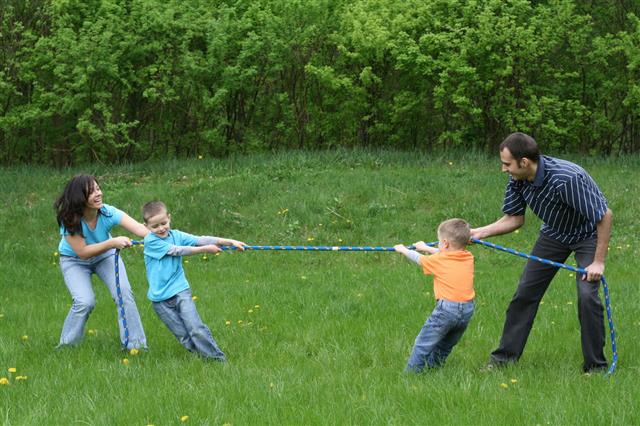
There is no denying the fact that tug of war is more of a recreational activity than a competitive sport. In the competitive variant of tug of war, there are certain rules and regulations that you have to follow.
The Summer Olympics Connection
Tug of war is a non-contact team sport where two teams with equal members are put to test against each other in a sheer show of strength. The objective is to either pull a specific part of the rope (competitive tug of war) or all the members of the opposite team (recreational variant of the sport) into your own territory. The fact that its rules are simple and it requires minimal equipment, makes tug of war a popular sport in various parts of the world.
Tug of War Rules and Regulations
Teams
➠ There are three categories: Junior, Under 23, and Senior, which are further classified into different weight classes, ranging from the Ultra Featherweight class (junior women), where the team weight should not exceed 480 kg or 1,058 lb, to Catchweight class, where there is no weight limit.
➠ While men and women don’t play against each other, mixed teams―comprising four men and four women―are allowed to contest.
Rope
➠ In recreational event, the rope can have knots to facilitate proper grip. However, these knots should be evenly spaced out to ensure fair play. In competitive events, no such arrangement is allowed.
Field and Marking
➠ In the case of indoor tug of war, the surface should be made of a material which provides sufficient friction. Additionally, two side lines are marked on the surface at a distance of four meters from the center line on either sides.
Gameplay
➠ The objective of each team is to pull the rope to their side. As soon as the part of the rope marked with the blue tape (four-meter tape) crosses over the center line, the team which has pulled the rope to their side wins. The event is generally played in a best-of-three format, where the team which wins two rounds wins the event.
Fouls
➠ Other fouls include touching the ground with any part of the body other than feet for an extended period, deliberately sitting or falling on the ground, passing the rope through hands (as if you were climbing the rope), stepping outside the demarcated pulling area, etc.
➠ The team can be held guilty even if only one player commits any foul, and two fouls may lead to team disqualification.
When it comes to tug of war strategies, the basic knowledge of these rules is quite helpful. You also need to note that these rules may differ from one competition to another depending on the region. If the sport is being played as a recreational activity, the rules are stripped to bare essentials. On the other hand, for world championships, the implementation of these rules is given utmost importance.










